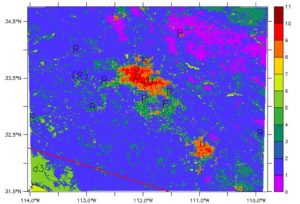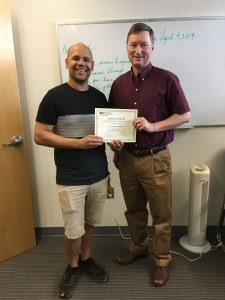Francisco Salamanca Palou, Assistant Research Professor, School of Mathematical and Statistical Sciences, June 10, 2019, presented “Summer and Wintertime Variations of the Surface and Near-surface UHI in a Semiarid Environment” to a joint MPAS/WRF workshop. Prepared by both Salamanca & colleague Alex Mahalov, Dean’s Distinguished Professor from the same school, Salamanca explained the motivation for this work stems from recent work done to augment the WRF-urban modeling system. Realizing that there was still additional work to complete, Salamanca and Mahalov set out to “examine summer- and wintertime variations of the surface and near-surface UHI for a semiarid urban environment using MODIS and near-surface meteorological observations.” Also, “to evaluate the WRF-urban modeling system’s (coupled to Noah-MP LSM) ability to reproduce the diurnal cycle of near-surface meteorology and LST during  both summer and wintertime weather conditions.”
both summer and wintertime weather conditions.”
Sharing detailed modeling experiments, the author’s conclusions were:
- The Surface UHI is found to be higher at night and during the warm season.
- The morning Surface UHI is low and frequently exhibits an Urban Cool Island that increases during the summertime period.
- The Near-surface UHI is higher at night and during summertime.
- The morning Near-surface UHI is low but rarely exhibits an Urban Cool Island.
- WRF (coupled to Noah-MP) model tends to slightly underestimate surface skin temperature during daytime but overestimates nighttime values during wintertime.
- WRF (coupled to Noah-MP) model tends to accurately reproduce the diurnal cycle of near-surface air temperature and wind speed during summertime, but overestimate near-surface nighttime air temperature during wintertime.
The entire presentation is available at: http://www2.mmm.ucar.edu/wrf/users/workshops/WS2019/workshop19agenda.php


